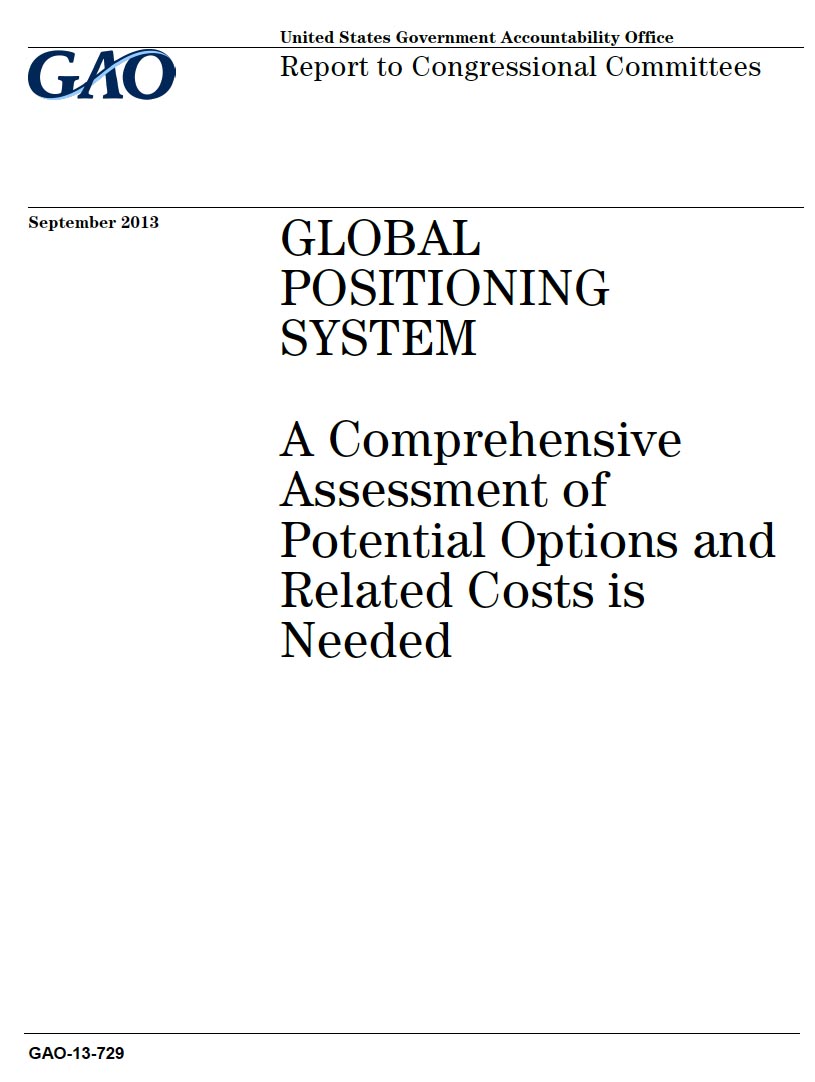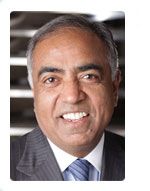
A U.S. Government Accountability Office (GAO) study on receiver performance and increased availability to radio frequency spectrum reveals just how complicated the issue underlying the GPS/LightSquared controversy is.
On February 22, the GAO sent the report — entitled “Spectrum Management – Further Consideration of Options to Improve Receiver Performance Needed” — to the Senate Committee on Commerce, Science, and Transportation and House Committee on Energy and Commerce.
A U.S. Government Accountability Office (GAO) study on receiver performance and increased availability to radio frequency spectrum reveals just how complicated the issue underlying the GPS/LightSquared controversy is.
On February 22, the GAO sent the report — entitled “Spectrum Management – Further Consideration of Options to Improve Receiver Performance Needed” — to the Senate Committee on Commerce, Science, and Transportation and House Committee on Energy and Commerce.
The LightSquared/GPS drama that played out before the Federal Communications Commission (FCC) and Congress in recent years served as a kind of poster child for the agency’s investigation. “Concern about interference, such as the potential interference between LightSquared’s planned network and GPS receivers, has been a factor in managing spectrum,” the report noted.
An accompanying white paper from the FCC’s Technological Advisory Council (TAC) Receivers and Spectrum Working Group — entitled “Interference Limits Policy — The use of harm claim thresholds to improve the interference tolerance of wireless systems,” talks more specifically about GPS and establishing interference levels that receivers would need to accommodate.
The Middle Class Tax Relief and Job Creation Act of 2012 required that GAO conduct a study of efforts “to ensure that transmission systems are designed and operated so as to not compromise reasonable use of adjacent spectrum, with a focus on receiver performance as it relates to increasing the efficient use of spectrum.”
The GAO investigation addressed the following questions: (1) What actions have selected manufacturers and commercial licensees taken to improve receiver performance? (2) What actions has the federal government taken to improve receiver performance? (3) What are the challenges, if any, to improving receiver performance? (4) What options have stakeholders and reports identified to improve receiver performance?
The report focused on adjacent band interference that occurs in two forms:
· transmitters emitting undesired emissions into adjacent frequencies that can cause interference to receivers — generally known as out-of-band emissions.
· user equipment receiving undesired emissions from transmitters in adjacent frequencies, causing them to experience interference due to undesired energy impairing receiver operation.
To address these questions, GAO reviewed relevant statutes, regulations, and FCC and National Telecommunications and Information Administration (NTIA) guidance and reports, and also interview FCC and NTIA officials to learn about actions the spectrum management agencies have taken to improve receiver performance. NTIA is responsible for managing the federal government’s use of spectrum while FCC is responsible for managing nonfederal spectrum use.
The agency researchers interviewed officials from industry associations representing various spectrum users, commercial licensees and manufacturers, and academics and representatives from research organizations. The agency also analyzed literature on receiver performance, standards, and interference from academic journals as well as workshop proceedings conducted by FCC, NTIA, and university-affiliated organizations.
Moving Focus from Transmitters
Historically, FCC and NTIA have used guard bands — idle spectrum that serves as a buffer between systems — and focused on transmitters emitting signals to manage interference between users in adjacent RF bands. However, guard bands take up limited RF spectrum that could be allocated for current and future services.
So, particularly in the wake of the GPS/LightSquared conflict, the FCC, NTIA, Congress and other organizations are looking more at receiver performance, such as the ability to filter out signals from undesired transmitters, as a possible way to increase spectrum efficiency.
In July 2012, the President’s Council of Advisors on Science and Technology (PCAST) made several spectrum management findings and recommendations. Among these was the suggestion that NTIA, in collaboration with FCC, establish spectrum management methodologies that consider both transmitter and receiver characteristics, stating that receiver characteristics increasingly constrain effective and efficient spectrum use.
NTIA has mandated the use of standards for receiver performance for many federal users that apply to about 60 percent of federal spectrum assignments, including land mobile radio, fixed, radar, and aeronautical mobile telemetry systems. Other federal spectrum users such as the Federal Aviation Administration (FAA) have established additional mandatory standards that cover another 10 percent of federal spectrum assignments.
However, the FCC has not set mandatory receiver standards for nonfederal spectrum users. The agency has statutory authority to establish minimum performance standards for home electronic equipment, such as televisions but lacks direct authority to impose regulations governing receiver performance in other cases outside home electronics. As a result, according to the GAO report, the FCC “has generally relied on the marketplace to incentivize nonfederal licensees and manufacturers to produce receivers that can reject unwanted signals and limit interference.”
Impediments to Improving Receiver Performance
The GAO identified several obstacles to improving receiver performance:
· lack of coordination across industries when developing voluntary standards
· lack of incentives for manufacturers or spectrum users to incur costs associated with improved resistance to interference
· difficulty accommodating a changing spectrum environment.
Standards are often developed for a single industry operating within a defined area of spectrum, and although members of that industry coordinate with each other, they may have little or no communication with services operating in adjacent spectrum bands, the GAO pointed out. Moreover, no publicly available repository exists that describes current receiver performance standards or specifications across spectrum allocations and uses.
Futher, because standards are largely voluntary for commercial users, the extent that industry standards are used remains unknown. “In fact, just because voluntary standards exist does not mean that licensees and manufacturers will use them,” the GAO report noted.
Improved receiver performance to limit adjacent band interference often requires the addition of filters and can increase the size, weight, power consumption, and cost of the receiver. And, as the GAO researchers pointed out, no business case “can explain why a business would accept these downsides so that others can benefit when implementing a new system in an adjacent band.”
Finally, as reflected in the experience of LightSquared’s attempt to repurpose spectrum allocated for satellite-based services into a terrestrial system, problems arise with existing receivers designed to operate without significant interference from adjacent bands.
Representatives from three industry associations told the GAO that it is difficult to build receivers to accommodate an unknown future. As one industry association member told them, “the problem is not a lack of information on the current environment but a lack of predictability about the future environment.”
A commonly mentioned disadvantage of improving receiver performance was that receivers would cost more, as more components are used in their manufacture. “In addition, many stakeholders also said that actions to upgrade or replace existing, legacy receivers could be costly or take a long time, particularly in the case of equipment designed to last for many years,” the report stated.
Possible Solutions
Several types of industry-developed standards could be used, according to the GAO: voluntary, mandatory, or a “safe harbor” approach that allows spectrum users to meet standards that provide protection from harmful interference.
Many stakeholders told told the GAO that they prefer an “industry-led, voluntary standard-creating process” rather than government-created and mandated standards, because they believed that industry-developed voluntary standards “can be responsive and flexible to changing conditions.”
Another option would impose limits setting the level of energy from unwanted signals in adjacent bands that a receiver would have to tolerate before making a claim of harmful interference. Interference limits differ from the safe-harbor standards by requiring that claims of harmful interference must demonstrate that the level of energy the receiver is exposed to exceeds a predetermined level, rather than having to show that a receiver complies with industry standards.
The GAO also suggested that “additional transparency and sharing of information on spectrum use and system characteristics by FCC and NTIA could help mitigate interference problems involving receivers by facilitating greater understanding of the systems already in place. . . .”
Another possibility would be for the federal government to promote research and development focused on improving receiver performance and increase spectrum efficiency.
The agency recommended that the FCC chairman “consider collecting information on the practical effects of various options to improve receiver performance, including consideration of small-scale pilot tests of these options.”





